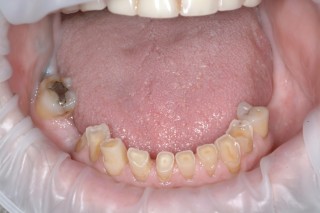If you asked most of your patients if they would fix their teeth if money were no object, the vast majority would say yes. We all have patients in our practice that need our services and want to have the best that dentistry can do for them.

With the current economic trend more people are being frugal with their discretionary income. I don't know about you but I don't have a ton of patients with a bunch of cash set aside to fix their teeth.
How can we make it possible for them to have the quality care they want and make it feasible financially?
For the patient that wants the best but cannot afford complete restorative care at this time it's necessary to stage their therapy over time. Long-term provisionals with composite are an ideal way to accomplish this objective.

Once the patient's restorative needs are determined an ideal wax up is created. The wax up is then duplicated in stone and a Vacuform matrix is created. The matrix is trimmed to the gingival margin to make easier clean up. Caries removal is done on diseased teeth. Restorations can either be left or removed depending on their condition. For metal crowns retention grooves can be cut into their surface. Crowns with a porcelain surface can be abraded and then conditioned to bond to the resin.
Once this is done the patient is isolated and the proper bonding protocol followed for the underlying structure. The matrix is then filled with composite and seated on the arch. The gross excess is trimmed away and the whole thing is cured. The teeth are then sectioned if so desired with fine finishing burs, cera-saws and finishing strips. The same is then done for the opposing arch if needed.

There are a number of benefits to staging a patient's therapy in this way. It allows the patient to have the crown and bridge work done over the course of years if necessary. If the patient is insurance-minded, they can rest assured that their plan will cover one or two of their crowns a year. It's also a great way for the patient to test-drive their new occlusion and pathways of function.
Darin O'Bryan, D.D.S., Spear Education Visiting Faculty www.onemorereasontosmile.com
FREE PREVIEW: Excellence in Anterior Composite Restorations
This course Pathway not only gives you a better understanding of the science behind composite materials, but it also includes a hands-on component that allows you to construct your own shade guide.
WATCH PREVIEW